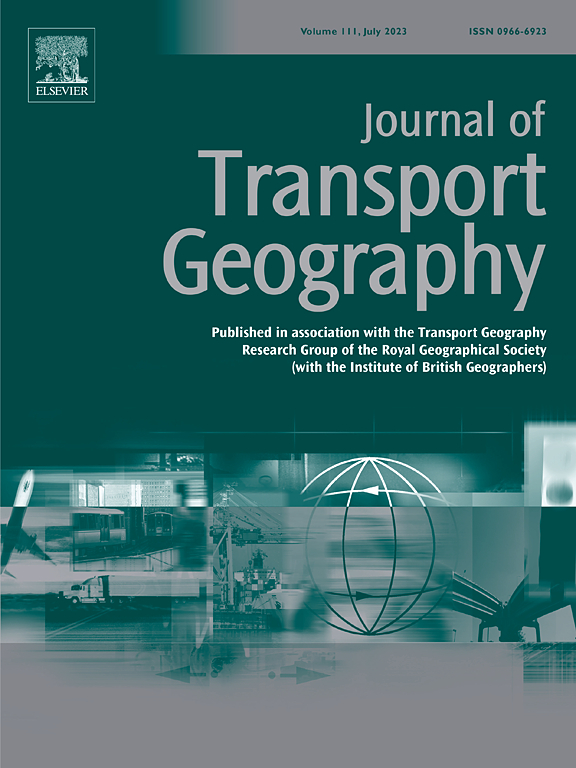城市场所不可替代性对城际出行方式选择的影响评价
IF 6.3
2区 工程技术
Q1 ECONOMICS
引用次数: 0
摘要
从功能角度理解城际交通方式与建成环境的关系,对于支持和改善交通服务、协调区域发展、促进区域可持续发展具有重要意义。在城市地区,居民经常为了寻求特定的功能和服务而进行城际出行,而出行方式的选择与出行目的密切相关。然而,关于城市功能差异对城际出行方式影响的研究却很少。在这项研究中,我们使用不可替代性(一个地方的功能独特性和稀缺性的衡量标准)来分析不同城市场所的功能差异,并进一步研究建成环境的功能方面与城际旅行模式之间的关系。我们对上海-苏州市区(中国)的这种关系进行了实证分析。结果表明,除了传统的建筑环境形态措施外,目的地的不可替代性与城际出行方式有着显著而重要的关系。人们对某些出行方式的选择,是受想要获得目的地城市独特服务的愿望驱动的。城市场所功能不可替代性强与区域轨道交通使用频繁相关,而不可替代性低的场所与道路交通相关。区域轨道交通站点的可达性调节了功能不可替代性的影响。区域轨道交通站点的可达性增强了其不可替代性作用,而高速公路的可达性显著抑制了其不可替代性作用。这表明,在上海-苏州地区,最不可替代的功能是由区域轨道交通来支持的。本研究通过引入不可替代性的功能测量,增强了建筑环境框架,为城际交通的可持续发展提供了有价值的见解。本文章由计算机程序翻译,如有差异,请以英文原文为准。
Assessing the impact of urban place irreplaceability on intercity travel mode choice
Understanding the relationship between intercity travel modes and the built environment from a functional perspective is essential for supporting and improving transportation services, coordinating regional development, and promoting regional sustainability. In urban regions, residents often engage in intercity travel to seek specific functions and services, and the choice of travel mode is closely related to the purpose of the trip. However, there has been limited research on the impact of differences in urban functions on intercity travel modes. In this study, we use irreplaceability (a measure of function uniqueness and scarcity of a place) to analyze the variations in the functions of different urban places and further examine the relationships between the functional aspects of the built environment and intercity travel modes. We conduct an empirical analysis of this relationship within the Shanghai–Suzhou urban region (China). The results indicate that, along with traditional morphological measures of the built environment, the irreplaceability of destinations displays a significant and important relationship with intercity travel modes. The selection of certain travel modes is driven by the desire to access unique services in destination cities. The strong functional irreplaceability of urban places is associated with frequent use of regional rail transit, whereas places with low irreplaceability are associated with road transit. Furthermore, the accessibility of regional rail transit stations moderates the effect of functional irreplaceability. The accessibility of regional rail transit stations enhances the role of irreplaceability, whereas the accessibility of expressways significantly suppresses it. This suggests that, within the Shanghai–Suzhou area, the most irreplaceable functions are best supported by regional rail transit. This study enhances the built environment framework by incorporating function measurements of irreplaceability, offering valuable insights into the sustainable development of intercity travel.
求助全文
通过发布文献求助,成功后即可免费获取论文全文。
去求助
来源期刊

Journal of Transport Geography
Multiple-
CiteScore
11.50
自引率
11.50%
发文量
197
期刊介绍:
A major resurgence has occurred in transport geography in the wake of political and policy changes, huge transport infrastructure projects and responses to urban traffic congestion. The Journal of Transport Geography provides a central focus for developments in this rapidly expanding sub-discipline.
 求助内容:
求助内容: 应助结果提醒方式:
应助结果提醒方式:


